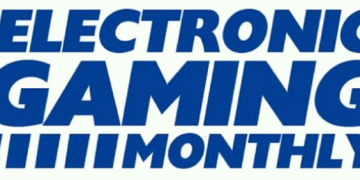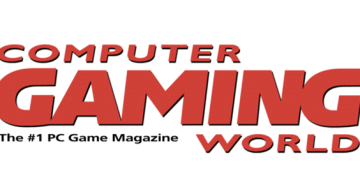2025-07-16 08:49:00
www.extremetech.com
If your graphics card isn’t quite as fast as it once was but you aren’t quite ready to upgrade yet, there’s a lot you can do to boost performance. From driver updates to settings tweaks, overclocking, and dynamic upscaling, it’s possible to make even old graphics cards much faster. Indeed, in many cases, you can make them faster than when they were brand new.
The following tips are generalized and should be useful for just about anyone, whether you have a GPU that’s a year old or a decade old, but there is only so much tweaks can do. You aren’t going to unlock new feature support with these suggestions, nor can you download any extra VRAM. The hardware you have is the hardware you have. We’re just going to help you make the most of it.
Here are some of the best ways to boost your GPU’s power without spending a thing.
Use DLSS/FSR/XeSS
If you have an Nvidia graphics card from the 2000-series onwards, or any AMD or Intel graphics card from the past decade, then you can take advantage of dynamic upscaling in games to improve frame rates. It works by rendering the game at a lower resolution and then upscaling the picture with AI to make the game look like it’s at a higher resolution.
The games you’re playing will need to support it, but enabling one of these upscaling algorithms will dramatically improve your frame rate. Set it to Quality mode to start with, but lower it to Balanced or Performance if you want more FPS at the expense of image quality.
Buy Lossless Scaling

Credit: THS
If a game you’re playing doesn’t support dynamic upscaling, or your graphics card isn’t playing ball with the standard algorithms, you can always use Lossless Scaling. This handy $6.99 third-party app lets you inject dynamic upscaling into just about any game. That includes frame generation, too!
It’s not the latest algorithms, so it’s not as effective as DLSS/FSR/XeSS, but it’s still very effective at increasing frame rates, and frame generation can be an absolute game changer in slower-paced, immersive titles.
Update Your Drivers
One of the most important tips for anyone looking to maximize graphics card performance is to make sure you’re running the latest drivers. Nvidia, AMD, and Intel often release updated performance drivers based on the latest games around launch and often a few months after, too. If you haven’t updated your drivers in a few months or even years, you could find your GPU performs notably better in a wide range of modern games after updating them.
You can download the latest drivers from the main GPU makers here:
Ideally, use Display Driver Uninstaller before installing the latest drivers to ensure the old drivers are removed successfully. It’s not mandatory, but it’ll give you the best chance of boosting GPU performance with the new drivers.
Clean Your PC
One of the biggest culprits for a graphics card performing worse than it should is because of overheating. If you find that the fan is particularly loud or that performance in games tends to worsen the longer you play, it could be because it’s overheating.
A great way to reduce the chances of that happening is just to clean your PC. Dust in the filters, around the fans, and particularly between the metal fins on the graphics card cooler can all contribute to an overheating GPU that throttles itself to prevent permanent damage. Cleaning all that out may let it work normally again, boosting performance back to where it should be.
Optimize Your Game Settings
Outside of improving your GPU’s performance, individual game tweaks can make a big difference to your frame rate. Some settings are particularly demanding on a graphics card, so turning them down or off can really boost your FPS.
For starters, turn off hardware-accelerated ray tracing or at least turn it down to its lowest setting. It’s by far the most demanding individual setting and is only viable for the latest and most powerful graphics cards. Also consider turning down anti-aliasing, draw distance, level of detail (LOD), and shadows.

Games like Cyberpunk 2077 offer a veritable buffet of menu options to allow anyone to enjoy decent frame rates if they’re willing to fiddle with their settings a bit.
Credit: CD Projekt
Rendering scale can be a useful slider to play with if available, and the above dynamic upscaling options aren’t possible, but try them first. Don’t adjust resolution unless you really have to, though. Most monitors will make an image look very blurry if you’re not gaming at the display’s native resolution. It’s just not worth the performance improvement, especially with more AI-powered alternatives available.
You’ll need to experiment with different options and see how it affects performance and visuals, as the effectiveness of changing any particular setting will vary dramatically between games and graphics cards.
Additionally, try running the game in Fullscreen mode. Windowed modes are sometimes slower than full screen because the GPU keeps drawing the desktop behind the game even when you can’t see it. With Windows 11, some games now only offer a borderless full-screen mode. Not every game shows a performance advantage for fullscreen versus borderless/windowed, but always check this setting if you’re trying to maximize performance.
Enable Game Mode
Navigate to Settings > Gaming > Game Mode, and make sure it’s toggled to On. It’s a minor thing and won’t result in a big uptick in performance, but this makes sure that when you run a game, Windows gives it the highest priority for running processes.
Switch to High Performance Power Mode
Navigate to Control Panel > Power Options and make sure High Performance mode is enabled. This is more applicable for laptops than it is for desktops, but in some cases, it can ensure that your GPU is getting all the power it needs to perform at its best.
Shut Down Background Apps
To really maximize in-game performance, turn off any other resource-hungry applications before playing. This includes web browser windows, streaming and messaging apps, AI chatbots, password managers, and anything else that’s not required for basic PC function and security, or the game itself.
You won’t net any extra GPU performance this way, but you’re likely to end up with a few extra free CPU cycles and some extra free memory, which can help in the most demanding of games.
Turn on XMP/EXPO
Memory performance doesn’t have a huge impact on gaming performance, but it can help a little. If your memory supports XMP or EXPO profiles, be sure to navigate to the BIOS and ensure it’s set to on. You’ll need to save the settings afterwards and reboot, but once the system starts back up again, your memory will be faster, your CPU more responsive, and your GPU will be better supported in games, potentially netting you a few extra frames per second.
Note: On AMD systems, the memory “training” after enabling EXPO can sometimes take a couple of minutes, so don’t be alarmed if your system doesn’t boot up immediately.
Turn on Resizable BAR
Resizable BAR, or Smart Access Memory on AMD systems, helps the CPU access larger quantities of the GPU’s memory at once and can have a big impact on performance. Indeed, Intel’s latest GPUs practically require it to be competitive and see a big drop-off in their capabilities when it’s disabled.
You can enable this in the BIOS or in your GPU driver software. It’s usually a toggle, but its location can vary, so if needed, look it up on your GPU manufacturer’s website.
Tweak the Drivers
Although game settings are usually the best place to adjust your gaming settings, some settings are only found in the drivers themselves, and they can be worth tweaking to boost performance.
Alongside the more capable AI-powered upscaling, Nvidia and AMD have both implemented more generic scaling options you can tap to improve overall quality on newer cards. AMD has Radeon Image Sharpening, and Nvidia has its own Image Sharpening option, shown below.

The Nvidia control panel lets you apply settings globally on let the game’s settings dictate things.
Credit: Nvidia
Enabling features like Image Sharpening allows you to set a lower base resolution and depend on the post-processing filter to improve image quality. The goal is to deliver something closer to 1080p visuals without actually taking the penalty from rendering at that resolution. Exactly how well this capability works will vary game by game for AMD and Nvidia.
Check for Online Tweaks, Unofficial Patches, and Unexposed Settings
Again, this one is highly game-dependent. Some games don’t support modding or have small user communities. But in some cases, end-users take it upon themselves to create patches that fix various aspects of a title, including issues that impact performance. Some games receive unofficial patches that can boost performance or optimize game textures for systems with low RAM.
Don’t be afraid to crawl underneath the hood of a game. Check inside the configuration files themselves to see what might be tunable. In some cases, you may find there are options the game developer has not exposed in-menu, or that the game supports a wider range of settings than the menu shows.
Sometimes, it’s possible to reduce further or disable particle effects, draw distances, shadows, or other detail settings by editing the game settings file by hand rather than relying only on in-game menus. Always keep a backup of any settings file you edit in this manner so you can restore it if you make a mistake.
BONUS: Overclock Your GPU
We’re only touching on the topic here, not diving into it, but overclocking your GPU is typically good for a few percentage points of performance, at the very least. Again, your results will vary based on which card you have and how aggressively the manufacturer tuned it beforehand. Tools like MSI Afterburner can be used to overclock most GPUs, but you can also use the AMD Radeon drivers’ performance section for GPU tuning, and there are other third-party tools worth considering, too.
Note: Everything written here applies to desktop GPUs. ExtremeTech does not recommend attempting to overclock a laptop GPU or one found in a handheld gaming device.

MSI Afterburner is the tool of choice for GPU overclocking as it works with any GPU and is easy to use.
Credit: MSI
Some overclocking tools have automated tuning, which can be a one-click way to get extra GPU performance. Look out for automatic overclocking if you want to keep things simple.
For a more manual tweak, increase the power limit as high as it will go. This will usually unlock additional GPU performance without any extra effort.
If you want to go further, start by increasing the core’s boost clock frequency by 25MHz. Then run a benchmark or game for a few minutes, and if it doesn’t crash, increase the frequency again. Repeat this until the game or benchmark crashes, then reduce the frequency back to the setting that it was most stable with.
Once you’ve found your chosen overclock, run a game for an hour or two to confirm stability. Once you’re sure it’s rock stable, save the settings so that they can be applied readily, or automatically when the system boots up next time.
Joel Hruska contributed to this article.
Explore new destinations with ease using the Garmin Drive 52 GPS Navigator! With over 17,988 ratings and a solid 4.4/5-star rating, this GPS system has been a top choice for travelers. Over 500+ units were bought in the past month, all for only $144.99.
This 5″ GPS navigator comes with essential driver alerts, real-time travel data, and external memory storage. The simple on-screen menus and bright, easy-to-see maps make it easy to navigate wherever you are. Plus, it’s road trip-ready with The HISTORY Channel database, featuring notable historic sites and much more to enhance your journey.
Don’t miss out—get your hands on the Garmin Drive 52 today for a smoother ride ahead! Buy Now for $144.99 on Amazon!
Help Power Techcratic’s Future – Scan To Support
If Techcratic’s content and insights have helped you, consider giving back by supporting the platform with crypto. Every contribution makes a difference, whether it’s for high-quality content, server maintenance, or future updates. Techcratic is constantly evolving, and your support helps drive that progress.
As a solo operator who wears all the hats, creating content, managing the tech, and running the site, your support allows me to stay focused on delivering valuable resources. Your support keeps everything running smoothly and enables me to continue creating the content you love. I’m deeply grateful for your support, it truly means the world to me! Thank you!
|
BITCOIN
bc1qlszw7elx2qahjwvaryh0tkgg8y68enw30gpvge Scan the QR code with your crypto wallet app |
|
DOGECOIN
D64GwvvYQxFXYyan3oQCrmWfidf6T3JpBA Scan the QR code with your crypto wallet app |
|
ETHEREUM
0xe9BC980DF3d985730dA827996B43E4A62CCBAA7a Scan the QR code with your crypto wallet app |
Please read the Privacy and Security Disclaimer on how Techcratic handles your support.
Disclaimer: As an Amazon Associate, Techcratic may earn from qualifying purchases.














![Massive Apple deal event – M3 iPad Air all-time low, AirPods, M4 MacBooks $300 off, more [Updated]](https://techcratic.com/wp-content/uploads/2025/08/AirPods-Pro-2-AirPods-4-360x180.jpg)


























































![BASENOR 3PCS Tesla Model Y Model 3 Center Console Organizer [Carbon Fiber Edition]…](https://techcratic.com/wp-content/uploads/2025/08/71R5dfCR9FL._AC_SL1500_-360x180.jpg)















![Alien: Romulus – 4K + Blu-ray + Digital [4K UHD]](https://techcratic.com/wp-content/uploads/2025/08/81fBb0Z1egL._SL1500_-360x180.jpg)















